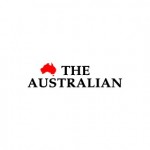 June, 15 (The Australian) — Australian companies have only 2 per cent of their global investment in emerging Southeast Asia. A radical overhaul of our focus and strategy is needed.
June, 15 (The Australian) — Australian companies have only 2 per cent of their global investment in emerging Southeast Asia. A radical overhaul of our focus and strategy is needed.
With a few exceptions, corporates are going to miss out on the growth of Southeast Asia.
The figures speak for themselves. ABS reports that while Australian companies have more than $81 billion invested in New Zealand, they have a mere $32bn in Indonesia, Malaysia, Thailand, Vietnam and The Philippines combined. Given the relative size and prospects of those economies, this is bordering on the ridiculous.
It begs the question: does the business community understand the growth story being played out in Southeast Asia?
Let’s look at the facts. According to a recent McKinsey report, if ASEAN were a single country, it would already be the seventh-largest economy in the world — more than 25 per cent larger than India’s economy and a larger total population than the EU or North America. It took Vietnam, The Philippines, Thailand and Indonesia between 11 and 25 years to double their GDP per capita (versus more than 30 years for Japan, 50 years for the US and 60 years for Germany).
And this is just the start. The robust economic growth of the past two decades will continue to lift millions out of poverty and expand further an already significant middle class.
The irony is that Australia has excellent capabilities in Southeast Asia’s prime growth industries. The growth of the middle class is generating massive needs in healthcare, education, infrastructure, financial services and food — all areas where Australian expertise has great cards to play.
Executives excuse their absence from emerging Southeast Asia by pointing to its dangers.
Corruption is rampant in the region, with Malaysia, The Philippines, Thailand, Indonesia and Vietnam ranked between the 50th and 119th in terms of quality of their practices by Transparency International. More broadly, those markets have significant peculiarities that make it difficult for pure foreign players to be successful.
This misses the fact that each of those markets also has high-quality local family-owned enterprises (FOEs), with proper governance structures, that do not engage in corruption.
These FOEs know their markets well, have strong reputations based on decades of success. And they are interested in entering into joint-venture agreements with foreign players who can bring value in the form of expertise, business know-how and brand quality. But, to engage with those high quality local groups, Australian corporates need to shape their approach to FOEs in the region, bearing in mind the local rules of doing business.
Businesses ownership and control is family rather than institutionally based.
Enterprises in emerging Southeast Asia are owned and controlled in a radically different way from Western companies. Even in situations where it would appear the ownership is “institutional”, the effective control is commonly maintained by a family and ultimately by a Tai-pan, often a 70-plus-year-old patriarch or matriarch. This applies to multi-billion-dollar groups, even those controlling multiple listed companies. Although some FOEs are in the process of transitioning to professional management, decision making still revolves around the family in a top-down mechanism. Working with individuals or intermediaries who have direct access to and trust from the families is essential, often saving years of wasted efforts.
FOEs often require majority ownership and control to save face.
This means deal structures require a certain flexibility and a more sophisticated and multi-faceted view of control. In this respect, learning from the way private equity funds structure their investments is useful.
Also, because they are often from Chinese heritage, FOEs typically do not consider asset trading as an attractive investment strategy: they like to own “forever”. Selling is often seen as a public sign of failure. This makes it challenging for private equity funds or foreign companies wishing to eventually own the asset they build with an FOE. Australian groups prepared to jointly own the asset with their Asian partner for the long term are invariably looked upon more favourably.
FOEs are highly sophisticated but patience is required.
Australian executives tend to underestimate their regional counterparts. They are often surprised when FOEs turn out to be highly sophisticated, with professional, experienced managers. Sons and daughters of the Tai-pan are MBA-educated in the US or Australia. That said, nothing in Asia happens quickly.
Australia has been dealt a good hand with its geographical proximity and expertise in the services needed by the emerging Southeast Asian middle class. But time is running out as other countries are already playing their cards aggressively and successfully.
Stephane Chatonsky is a co-founder and managing director of Ivest, a corporate advisory firm specialised in Asian-based market entry strategy, M&A and investments.
(Published in The Australian, 15 June 2015)



